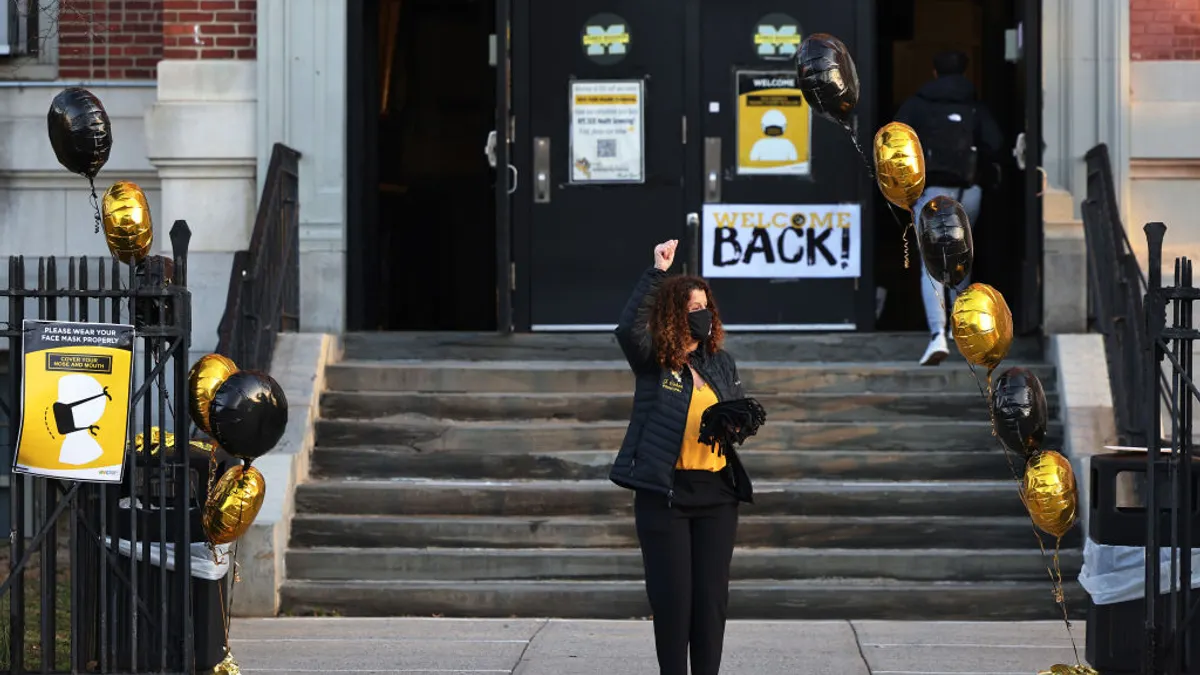School districts are already anticipating a fiscal cliff from the expiration of federal pandemic relief funds, but that slide could be even steeper due to recent and upcoming state funding changes.
Finance experts and new analyses warn that developments at the state level, such as tax cuts and the expansion of private school voucher programs, could siphon funds from public schools and make it more difficult for them to recover from the expiration of federal pandemic aid in the 2024-25 school year.
States passing tax cuts in 2024 and those that have already passed cuts in previous years could make that harder, an analysis released by Center on Budget and Policy Priorities on Wednesday shows.
"Pandemic-related aid has really bolstered a lot of K-12 schools' ability to provide things like school meals, to update materials, to update buildings," said Whitney Tucker, director of state fiscal policy research for the CBPP, during a Wednesday press call. "And now with the ending of those funds, they were already going to have budget holes that needed to be filled."
Over the past three years, 26 states have cut personal and corporate income tax rates and will collect a total estimated $111 billion less over the next five years and incur a loss of $30 billion per year by 2028.
And although the 2024 legislative season is just kicking off, governors have already been submitting their annual spending proposals, and state legislators have been rolling out tax and spending measures in recent weeks. Tax-cut plans similar to those of previous years are on the table in at least a dozen states "signaling that the recent tax-cut wave will likely continue to be a major trend this year," according to Wes Tharpe, senior advisor for state tax policy at CBPP.
Shrinking revenues as a result of those cuts will impact public services, including schools, in 2024 and beyond, said the CBPP report.
That's because schools will be among "the first things on the chopping block" as states begin to look for new ways to bring in revenue, added Tucker. "And so I think that schools should really be on high alert when they see these tax cut proposals coming through."
Voucher expansion and tax cuts compound
North Carolina schools, for example, are among those that could see financial strain on multiple fronts.
On one hand, CBPP projects that cuts passed in 2021 and 2023 will cost the state $24.3 billion between 2024 and 2028, or nearly 11% of its general fund revenue over the course of those five years.
North Carolina was also among the handful of states in the 2023 legislative session to expand its voucher program, opening it to nearly all students regardless of family income.
"We've seen the impact in our schools deeply," said Alexandra Sirota, executive director of the North Carolina Budget and Tax Center, a nonpartisan organization that tracks fiscal and economic conditions across the state.
"Because it is available to families, we know that it will have a huge impact on the funding available in classrooms," said Sirota.
The expected impact is so great that Gov. Roy Cooper last year warned against state lawmakers' efforts to expand vouchers and cut taxes on the grounds that North Carolina faced a "state of emergency" partly as a result.
Other states that approved similar voucher program expansions include Florida, Arizona, Indiana and Ohio, according to the National Coalition for Public Education. Meanwhile, Arkansas, Iowa, Utah and Oklahoma created new voucher programs that are also open to all students.
Many of these states have also seen tax cuts in recent years, per CBPP, potentially snowballing the financial drain on their public schools.
Compounding the issue, vouchers often grow beyond what's projected when they are initially passed in state legislatures, said Tucker.
In 2023, researchers from Columbia University found that states' spending on voucher programs in Arizona, Florida, Georgia, Indiana, Louisiana, Ohio, and Wisconsin between 2008 and 2019 went well over lawmakers’ projections. In the same decade, the states’ per-pupil expenditures on public education dropped while public school enrollment increased or stayed the same.
"So K-12 school districts that were already in pretty dire straits are going to be put in even worse conditions if universal school voucher programs are allowed to be pushed through state legislatures," said Tucker. "And also if their state is pushing really big income tax cuts that are going to harm those schools."
Fiscal cliff adds to pre-existing state budget shortcomings
Warnings from tax and budget experts that the anticipated fiscal cliff could be exacerbated by state actions come as a separate report released last week found a majority of states devote a smaller share of their economies to their public schools now than they did before the 2007-2009 recession.
Specifically, 39 states have decreased their support for public schools, representing a loss of over $360 billion in state and local K-12 funding between 2016 and 2021, according to researchers at the Albert Shanker Institute, University of Miami and Rutgers University.
“In the decade and a half since the height of the so-called ‘Great Recession,’ most states have increased their expectations for the performance of schools, teachers, and students,” Bruce Baker, a University of Miami professor and co-author of the report, said in a statement last week. “But they have refused to make their districts whole after the disastrous cuts during that recession.”
Arizona, Indiana, Florida and Idaho — some of the states experiencing notable tax cuts and expanded voucher programs — were again among states singled out in that report as having some of the most "enormous proportional losses in funding" between 2016 and 2021.
“Right now everyone is concerned about the so-called ‘fiscal cliff’ coming when federal pandemic aid runs out," said Mary Cathryn Ricker, executive director of the Albert Shanker Institute and Minnesota's former education commissioner, in a statement. "But school funding in most states fell off a fiscal cliff 15 years ago and never got back up.”





















